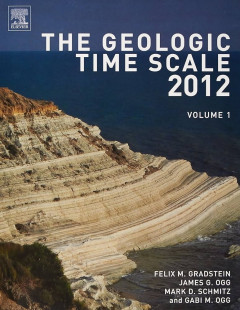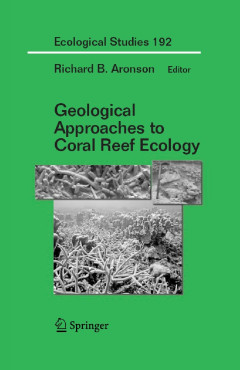Ditapis dengan
Ditemukan 730 dari pencarian Anda melalui kata kunci: location=Balai Besar Survei da...

Environmental and Low Temperature Geochemistry
- Edisi
- -
- ISBN/ISSN
- 9781405186124
- Deskripsi Fisik
- -
- Judul Seri
- -
- No. Panggil
- BSL 550.849.1 RYA e
- Edisi
- -
- ISBN/ISSN
- 9781405186124
- Deskripsi Fisik
- -
- Judul Seri
- -
- No. Panggil
- BSL 550.849.1 RYA e

Earthquake Science and Seismic Risk Reduction
50
- Edisi
- -
- ISBN/ISSN
- 9781402017782
- Deskripsi Fisik
- xviii, 338 p. : ill., maps ; 25 cm. + 1 CD ROM (4/
- Judul Seri
- NATO science series
- No. Panggil
- BSL 550.348.436 MUL e

Mixing Properties of Thermal Convection in the Earth's mantle
- Edisi
- -
- ISBN/ISSN
- 00721026
- Deskripsi Fisik
- ii, 104 p. : ill; 29 cmx16cm
- Judul Seri
- Geologica Ultraiectina
- No. Panggil
- BSL 551 SCH
- Edisi
- -
- ISBN/ISSN
- 00721026
- Deskripsi Fisik
- ii, 104 p. : ill; 29 cmx16cm
- Judul Seri
- Geologica Ultraiectina
- No. Panggil
- BSL 551 SCH

Earthquakes : Models, Statistics, Testable Forecasts
The temporal dimension indicates that earthquake origin times are concentrated on a small subset of total time, determining quantitatively properties of this subset are the basis for the short-term earthquake prediction. Similarly, the long-term forecasts are based on the description of the spatial structure of earthquake occurrence, its dimension p…
- Edisi
- -
- ISBN/ISSN
- 9781118637920
- Deskripsi Fisik
- -
- Judul Seri
- Statistical Physics of Fracture and Breakdown
- No. Panggil
- BSL 550.34 KAG e

Geologic Modeling and Simulation : Sedimentary Systems
Modeling and simulation were introduced to the earth sciences about four decades ago. Modeling has proven its worth and now it is an accepted procedure for analyzing and solving geological problems. The papers in this collection are focused on modeling sediment deposition and sedimentary sequences and have a decidedly practical flavor. Some of the l…
- Edisi
- -
- ISBN/ISSN
- 9781461355151
- Deskripsi Fisik
- -
- Judul Seri
- Computer Applications in the Earth Sciences
- No. Panggil
- BSL 550.8:519.7.11 GEO g

The Geologic Time Scale 2012: volume 1
1. V. 1. The chronostratigraphic scale / F.M. Gradstein and J.G. Oggrn2. Biochronology / F.M. Gradsteinrn3. Cyclostratigraphy and astrochronology / L.A. Hinnov and F.J. Hilgenrn4. Geomagnetic polarity time scale / J.G. Oggrn5. Radiogenic isotope geochronology / M.D. Schmitzrn6. Strontium isotope stratigraphy / J.M. McArthur, R.J. Howarth and G.A. Sh…
- Edisi
- 1st Ed. Vol. 1
- ISBN/ISSN
- 9780444594259 (set)
- Deskripsi Fisik
- 2 v. (xviii, 1144 p.) : ill. (chiefly col.), col.
- Judul Seri
- -
- No. Panggil
- BSL 551.7.03 GRA g1

Fundamentals of Basin and Petroleum Systems Modeling
Introduction to Basin Modeling Pages 1-30rnrnPore Pressure, Compaction and Tectonics Pages 31-101rnrnHeat Flow Analysis Pages 103-150rnrnPetroleum Generation Pages 151-198rnrnFluid Analysis Pages 199-245rnrnMigration and Accumulation Pages 247-340rnrnRisk Analysis Pages 341-380rnrnMathematical Methods Pages 381-404
- Edisi
- -
- ISBN/ISSN
- 9783540723172
- Deskripsi Fisik
- xvi, 476 p. : ill. (some col.) ; 25 cm.
- Judul Seri
- -
- No. Panggil
- BSL 665.6 HAN f

Geological Approaches to Coral Reef Ecology
The Changing Fate of Coral Reefs: Lessons from the Deep PastrnPages 3-27rnrnTaphonomy: Detecting Critical Events in Fossil Reef-Coral AssemblagesrnBenjamin J. GreensteinrnPages 31-60rnrnBiotic Turnover Events on Coral Reefs: A Probabilistic ApproachrnRichard B. Aronson, Stephen P. EllnerrnPages 61-84rnrnInferring Past Outbreaks of the Crown-of-Thorn…
- Edisi
- -
- ISBN/ISSN
- 9780387335384
- Deskripsi Fisik
- xxii, 439 p. : ill., maps ; 25 cm.
- Judul Seri
- Ecological studies
- No. Panggil
- BSL 551.438.232 ARO g

Handbook of Energy Engineering Calculations
1 ENERGY CONVERSION ENGINEERINGrn2 STEAM POWER GENERATIONrn3 GAS-TURBINE ENERGY POWER GENERATIONrn4 INTERNAL-COMBUSTION ENGINE ENERGY ANALYSESrn5 NUCLEAR ENERGY ENGINEERINGrn6 HYDROELECTRIC ENERGY POWER PLANTSrn7 WIND-POWER ENERGY DESIGN AND APPLICATIONrn8 SOLAR-POWER ENERGY APPLICATION AND USAGErn9 GEOTHERMAL ENERGY ENGINEERINGrn10 OCEAN ENERGY ENG…
- Edisi
- -
- ISBN/ISSN
- 9780071745529
- Deskripsi Fisik
- 1 v. (various pagings) : ill. ; 25 cm.
- Judul Seri
- -
- No. Panggil
- BSL 620.91 HAN h

Climate Forcing of Geological Hazards
Chapter 1: Hazardous responses of the solid Earth to a changing climaternBill McGuirernrnChapter 2: Future climate changes in the context of geological and geomorphological hazardsrnFelicity Liggins, Richard Betts and Bill McGuirernrnChapter 3: Climate change and collapsing volcanoes: evidence from Mount Etna, SicilyrnKim Deeming, Bill McGuire and P…
- Edisi
- -
- ISBN/ISSN
- 9780470658659
- Deskripsi Fisik
- xiii, 311 p. : ill. ; 26 cm.
- Judul Seri
- -
- No. Panggil
- BSL 551.588.6 CLI c
 Karya Umum
Karya Umum  Filsafat
Filsafat  Agama
Agama  Ilmu-ilmu Sosial
Ilmu-ilmu Sosial  Bahasa
Bahasa  Ilmu-ilmu Murni
Ilmu-ilmu Murni  Ilmu-ilmu Terapan
Ilmu-ilmu Terapan  Kesenian, Hiburan, dan Olahraga
Kesenian, Hiburan, dan Olahraga  Kesusastraan
Kesusastraan  Geografi dan Sejarah
Geografi dan Sejarah